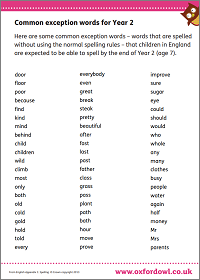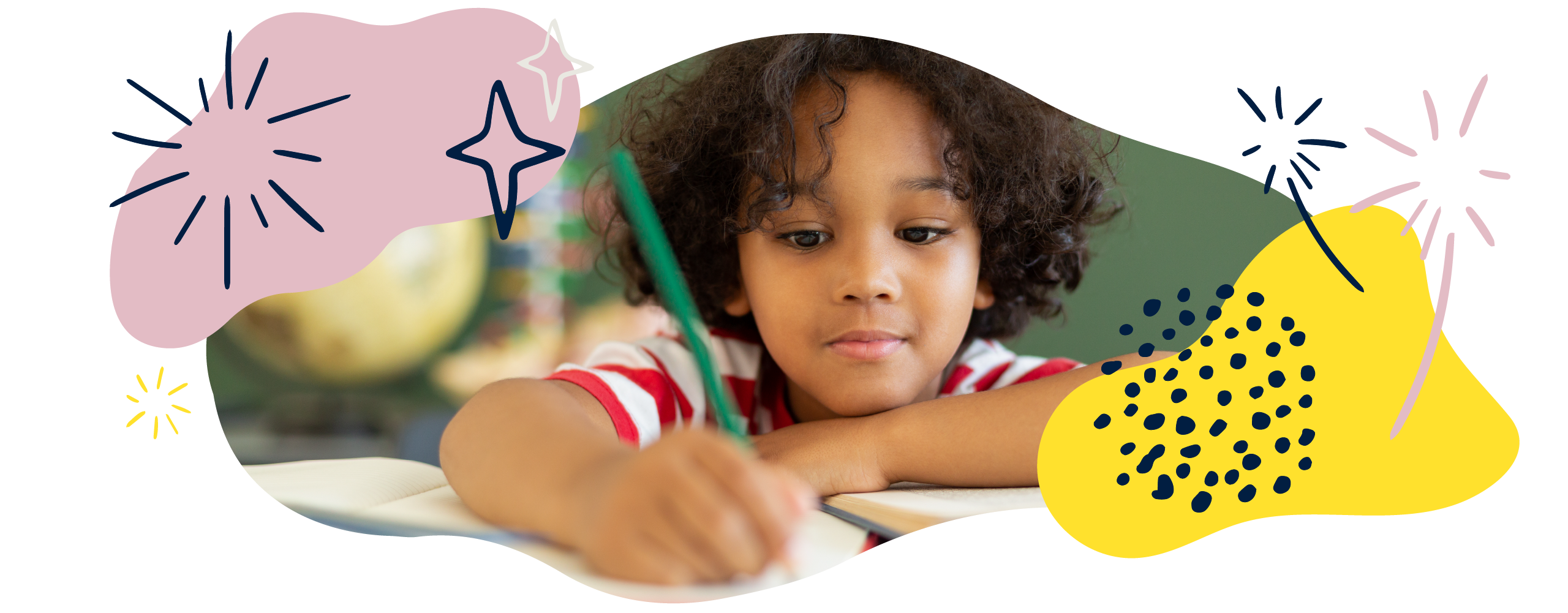Spelling in Year 2 (age 6–7)
In Year 2, your child’s knowledge of spelling is assessed by their teacher. There is also an optional spelling, punctuation, and grammar (SPaG) test that schools can use to help them gauge children’s understanding. Find out more about the test on our Key Stage 1 SATs page.
Read on to discover the National Curriculum expectations for spelling in Year 2, and to find out how you can support your child at home.
What your child will learn
Take a look at the National Curriculum expectations for spelling in Year 2 (age 6–7):
Segmenting spoken words into phonemes and writing them out with graphemes
Phonics is a way of teaching children to read and spell. English is made up of around 44 different sounds. We call these sounds phonemes.
Like most languages, English has a code for how we write these sounds down. Each phoneme can be represented by one or more letters, called graphemes. A grapheme might be a single letter representing one sound (such as ‘m’ or ‘f’) or it might be more than one letter (‘ay’ or ‘igh’).
Find out more about how phonics works:
Your child will learn to segment in order to spell words. This means that they will break words down to their phonemes, and then figure out which graphemes represent them. They will then write down the graphemes to spell out the word.
For a full list of the sounds that children will learn to spell in Year 2, take a look at the National Curriculum spelling appendix.
Learning new spellings for phonemes, alongside some new words for each new spelling
In Year 2, your child will use phonics to read and spell new words. They will continue to learn different ways of representing the same sound (for example, the -le used at the end of ‘table’ and the less-common -el used in ‘squirrel’). A full list of the sounds your child will learn to spell in Year 2 can be found in the National Curriculum spelling appendix.
Homophones are words that are spelled differently and have different meanings, but are pronounced in the same way. They are often confused in children’s writing. In Year 2, children will be taught the difference between:
there/their/they’re
here/hear
see/sea
bare/bear
one/won
sun/son
to/too/two
be/bee
blue/blew
night/knight
Spelling common exception words
In some English words, the spelling of the word doesn’t appear to fit with the phonemes that your child has learnt so far. These are often called ‘common exception words’ or ‘tricky words’. In Year 2, your child will learn to spell lots of exception words often used in writing. They include:
door, floor, poor, because, find, kind, mind, behind, child, children, wild, climb, most, only, both, old, cold, gold, hold, told, every, everybody, even, great, break, steak, pretty, beautiful, after, fast, last, past, father, class, grass, pass, plant, path, bath, hour, move, prove, improve, sure, sugar, eye, could, should, would, who, whole, any, many, clothes, busy, people, water, again, half, money, Mr, Mrs, parents, Christmas
To practise spelling common exception words, download our Year 2 common exception words worksheet.
Spelling more contractions
In contractions, the apostrophe shows where a letter or letters would be if the words were written in full (for example, don’t instead of do not).
It’s means it is (for example, ‘It’s raining’) or sometimes it has (‘It’s been raining)’, but the apostrophe is not used for the possessive (‘The car parked in it’s space’ would not be correct; the correct form would be ‘The car parked in its space’). Common contractions used in Year 2 include: can’t, didn’t, hasn’t, couldn’t, it’s, I’ll.
Learning the singular possessive apostrophe
Apostrophes are used for two main purposes, both of which will be taught to children in Year 2:
- Showing contractions (missing letters). For example, ‘I’m’ for ‘I am’ or ‘shouldn’t’ for ‘should not’.
- Showing possession, who or what something belongs to. For example, ‘Paul’s bike’ or ‘the girl’s voice’.
Adding suffixes like -ment, -ness, -ful, -less, and -ly to spell longer words
Suffixes are morphemes (groups of letters that mean something on their own) that are added at the end of a root or root word to change the meaning. Prefixes are morphemes added at the front of a word. Over the course of Year 2, your child will learn about some of the most common suffixes to spell longer words, including: -ment, -ness, -ful, -less, -ly.
How to help at home
There are lots of ways you can help your Year 1 child with spelling. Here are our top ideas.
1. Practise phonics
Phonics is the main way your child will learn to spell at the start of primary school. You can use phonics by encouraging your child to spell a word by breaking it up into individual sounds and then matching those sounds to the letters of the alphabet.
Reminding children to segment ‘frog’ into its four sounds – ‘f’ ‘r’ ‘o’ ‘g’ – sounds like such a basic way of supporting spelling, but practising it is very important if it is to become second nature. Take a look at our phonics page to find out more.
Video: What is phonics?
2. Help with spelling homework
Some schools send spelling words home to learn in Year 2, while others just use phonics sessions at school to teach spelling. If words do come home as a list to learn (perhaps for a spelling test), then helping your child to learn them can be really helpful. If they are struggling to remember them, you might:
-
- Draw their attention to any patterns or groups of letters in the words, making links to the phonics they’ve been taught:
‘which letters are making the ‘ay’ sound here? Yes, it’s the ‘ai’, just like in ‘gain’ and ‘Spain’. That’s different to the ‘ay’ sound in ‘play’, isn’t it?’
- Use over-pronunciation. So for Wednesday, encourage children to say Wed-nes-day as they write. There are lots of words which feature sounds that aren’t always pronounced clearly (such as words ending in -ed), and over-emphasising these while spelling them out can help fix the spelling in your child’s memory.
- Ask your child to write down the words that they need to remember how to spell. The physical act of writing the words by hand helps to anchor the spelling in children’s memories and encourages them to think about the letters that represent the sounds in the word. Typing the words into a PC or tablet isn’t as effective.
- Focus your child’s attention on the tricky bits in a word by asking them to highlight them. For example, show them that said has ‘ai’ in the middle and ask them to write the word, and then highlight or underline this part to help them remember. There are few resources more motivating than a highlighter pen for primary-aged children!
- Draw their attention to any patterns or groups of letters in the words, making links to the phonics they’ve been taught:
3. Play spelling games
Playing games can help children to learn about spelling in an enjoyable way. Watch grammar expert Charlotte Raby’s video ‘How can I help my child with grammar, punctuation and spelling?’ to see some fun games in action:
Charlotte Raby offers her expert advice for helping your child develop their grammar, punctuation, and spelling skills at home.
For example, your child may have to learn ‘room took hoop foot book’. They could make up a silly sentence such as ‘The boy took his book across the room but got his foot caught in a hoop’. Why not draw illustrations to go with the sentences?
4. Find the right resources
Learning to spell is a gradual process and mastering English’s complex spelling system can take time. All children are different: some pick up spelling quickly, while others take longer. Whatever their level, we have lots of free spelling activities to support them.
Year 2 common exception words

Learn the common exception words children are expected to spell by the end of Year 2.
